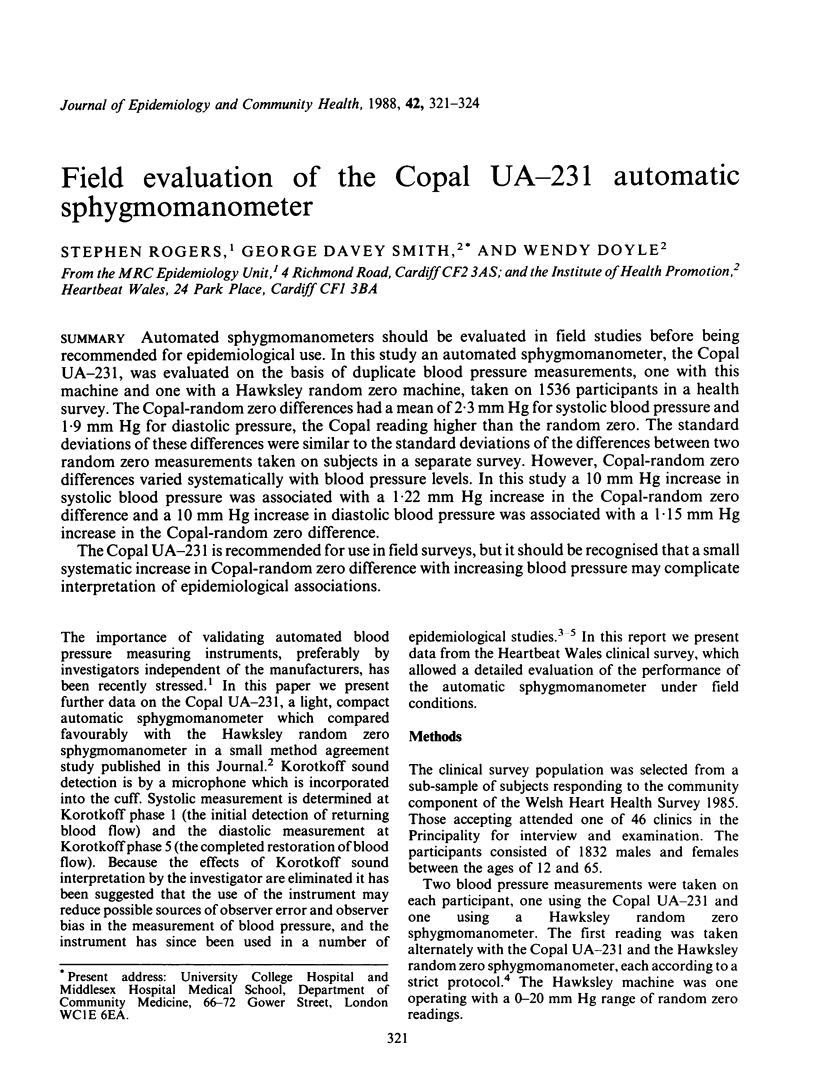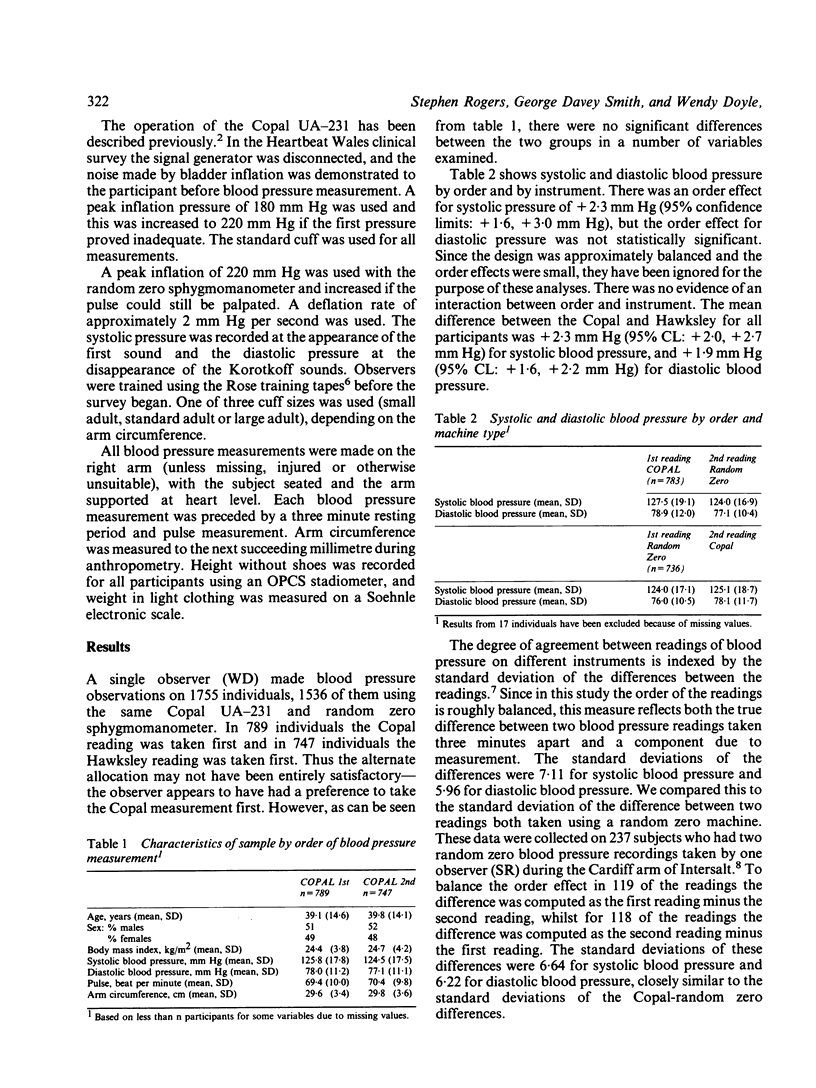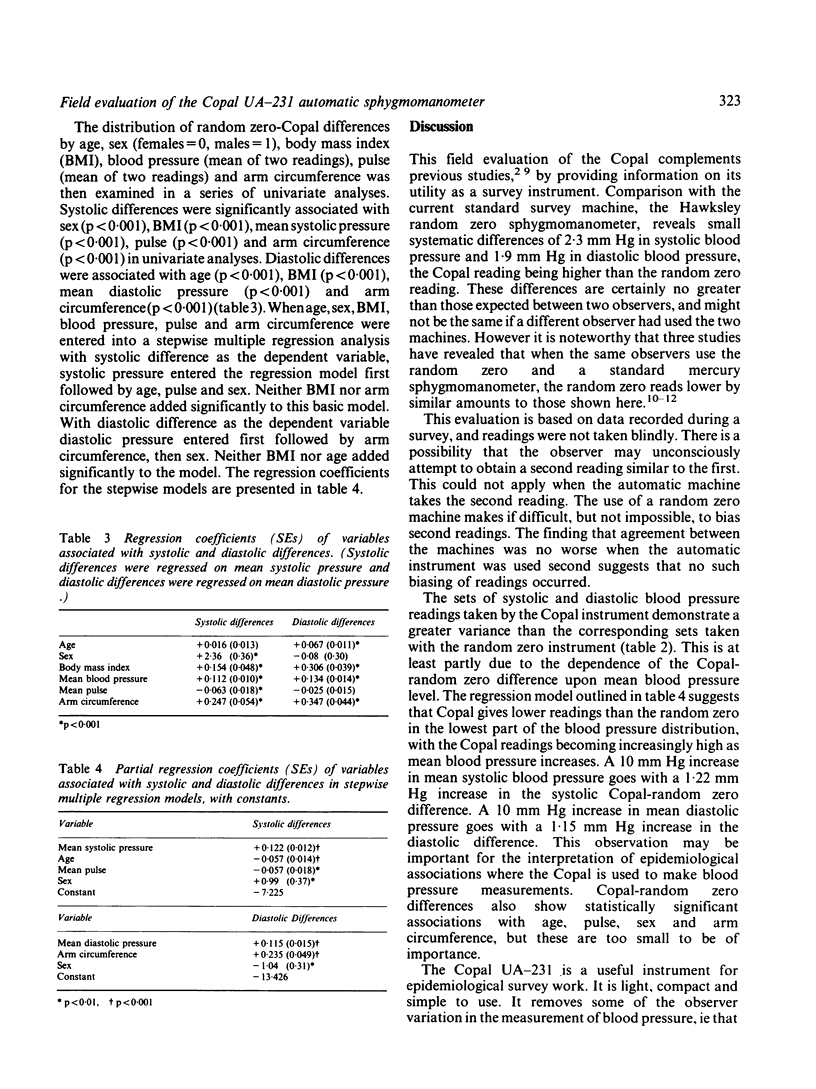Abstract
Automated sphygmomanometers should be evaluated in field studies before being recommended for epidemiological use. In this study an automated sphygmomanometer, the Copal UA-231, was evaluated on the basis of duplicate blood pressure measurements, one with this machine and one with a Hawksley random zero machine, taken on 1536 participants in a health survey. The Copal-random zero differences had a mean of 2.3 mm Hg for systolic blood pressure and 1.9 mm Hg for diastolic pressure, the Copal reading higher than the random zero. The standard deviations of these differences were similar to the standard deviations of the differences between two random zero measurements taken on subjects in a separate survey. However, Copal-random zero differences varied systemically with blood pressure levels. In this study a 10 mm Hg increase in systolic blood pressure was associated with a 1.22 mm Hg increase in the Copal-random zero difference and a 10 mm Hg increase in diastolic blood pressure was associated with a 1.15 mm Hg increase in the Copal-random zero difference. The Copal UA-231 is recommended for use in field surveys, but it should be recognised that a small systematic increase in Copal-random zero difference with increasing blood pressure may complicate interpretation of epidemiological associations.
Full text
PDF



Selected References
These references are in PubMed. This may not be the complete list of references from this article.
- Bland J. M., Altman D. G. Statistical methods for assessing agreement between two methods of clinical measurement. Lancet. 1986 Feb 8;1(8476):307–310. [PubMed] [Google Scholar]
- Evans J. G., Prior I. A. Experience with the random-zero sphygmomanometer. Br J Prev Soc Med. 1970 Feb;24(1):10–15. doi: 10.1136/jech.24.1.10. [DOI] [PMC free article] [PubMed] [Google Scholar]
- Gallacher J. E., Yarnell J. W., Rogers S., Sweetnam P. Automatic measurement of blood pressure: evaluation of the Copal UA-231 automatic sphygmomanometer. J Epidemiol Community Health. 1985 Sep;39(3):220–223. doi: 10.1136/jech.39.3.220. [DOI] [PMC free article] [PubMed] [Google Scholar]
- Labarthe D. R., Hawkins C. M., Remington R. D. Evaluation of performance of selected devices for measuring blood pressure. Am J Cardiol. 1973 Sep 20;32(4):546–553. doi: 10.1016/s0002-9149(73)80046-3. [DOI] [PubMed] [Google Scholar]
- O'Brien E., Petrie J. C., Littler W. A., de Swiet M. Standards for blood pressure measuring devices. Br Med J (Clin Res Ed) 1987 May 16;294(6582):1245–1246. doi: 10.1136/bmj.294.6582.1245. [DOI] [PMC free article] [PubMed] [Google Scholar]
- Padfield P. L., Lindsay B. A., McLaren J. A., Pirie A., Rademaker M. Changing relation between home and clinic blood-pressure measurements: do home measurements predict clinic hypertension? Lancet. 1987 Aug 8;2(8554):322–324. doi: 10.1016/s0140-6736(87)90903-2. [DOI] [PubMed] [Google Scholar]
- ROSE G. STANDARDISATION OF OBSERVERS IN BLOOD-PRESSURE MEASUREMENT. Lancet. 1965 Mar 27;1(7387):673–674. doi: 10.1016/s0140-6736(65)91827-1. [DOI] [PubMed] [Google Scholar]
- de Gaudemaris R., Folsom A. R., Prineas R. J., Luepker R. V. The random-zero versus the standard mercury sphygmomanometer: a systematic blood pressure difference. Am J Epidemiol. 1985 Feb;121(2):282–290. doi: 10.1093/oxfordjournals.aje.a113998. [DOI] [PubMed] [Google Scholar]


